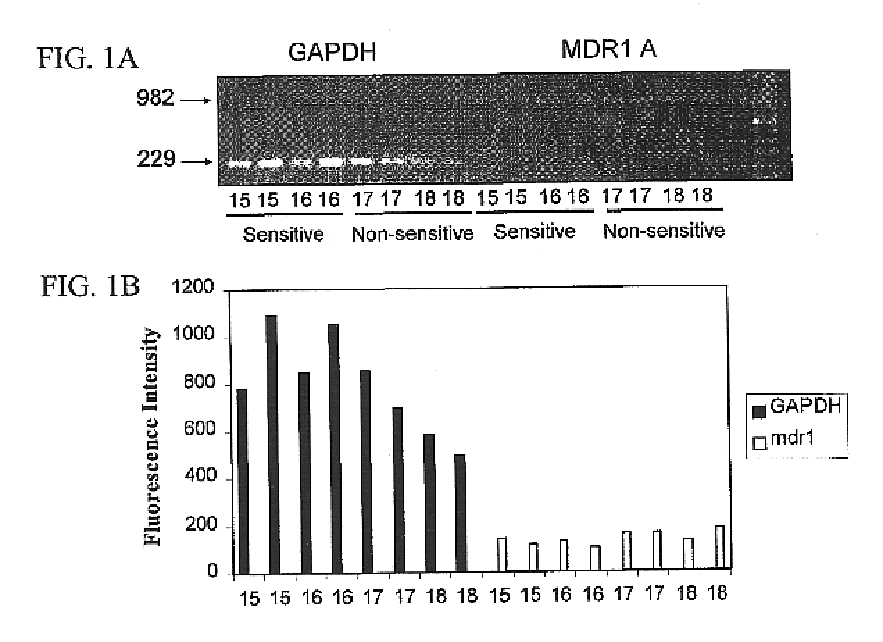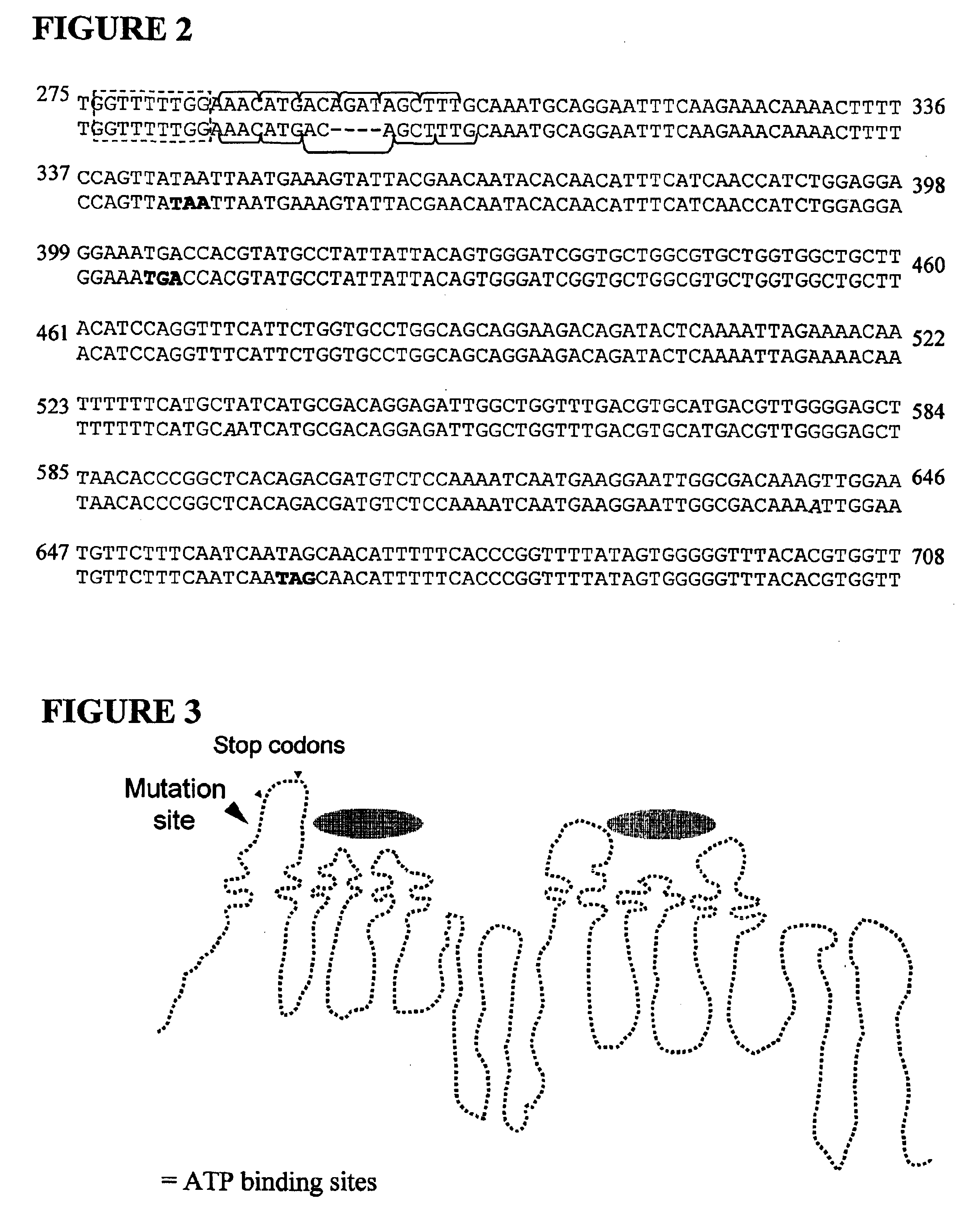Method of detecting ivermectin sensitivity in a canine subject by identifying a mutation in a mdr1-encoding sequence
a technology of ivermectin and mutation, applied in the field of kits and methods for detecting the sensitivity of subjects to pharmaceutical agents, can solve problems such as failure of blood-brain barrier
- Summary
- Abstract
- Description
- Claims
- Application Information
AI Technical Summary
Benefits of technology
Problems solved by technology
Method used
Image
Examples
example 1
Identification of a Truncation Mutation in Collie mdr1
Materials and Methods
General Procedures and Materials
Procedures used in research disclosed herein were approved by the Institutional Animal Care and Use Committee.
Blood samples (8 ml) were obtained by jugular venipuncture from each of 13 clinically healthy Collies (Wil-O-Lane Kennels, Allegan, Mich.). All Collies used in the study had previously been identified as ivermectin-sensitive or -nonsensitive by observing dogs for signs of neurotoxicosis after oral administration of 120 .mu.g of ivermectin per kg of body weight (20 times the label dose for heartworm prevention), as previously described (Paul et al, Amer. J. Vet. Res. 61:482-483, 2000; Fassler et al., J. Am. Vet. Med. Assoc. 199:457-460, 1991). Each dog was identified by an ear tattoo and housed in a run measuring 4.times.8 feet with metal walls and a raised, coated, metal screen floor. Facilities exceeded the minimal requirement specified by USDA guidelines.
Seven Collies...
example 2
Frequency of the Mutant MDR1 Allele
This Example provides methods and results from a study to determine the frequency of the mutant MDR1 allele associated with ivermectin sensitivity in a sample of Collies living in Washington and Idaho. Blood was collected from 40 Collies for RNA extraction. The RNA was reverse transcribed, and PCR performed to amplify a 1061-base pair amplicon containing the MDR1 mutation. Sequence analysis was performed to determine the genotype of each dog. Twenty-two percent of the Collies studied were homozygous for the normal allele (normal), 42% were heterozygous (carrier), and 35% were homozygous for the mutant allele (affected).
Materials and Methods
Animals--Forty clinically healthy, client-owned Collies were studied. Owner consent was obtained, and the study was approved by the Institutional Animal Care and Use Committee. Both rough-coated and smooth-coated Collies were represented. Dogs included in the sample population were those animals for which the own...
example 3
Other mdr1 Truncations
With the provision herein of the correlation between a canine mdr1 gene truncation and ivermectin sensitivity, the isolation and identification of additional mdr1 truncations, and similar truncations in other canine species, is enabled. Conventional methods for the identification of genetic polymorphisms in a population can be used to identify such additional polymorphisms.
For instance, existing populations (e.g. Collie or other populations) are assessed for ivermectin sensitivity (or sensitivity to other drugs that interact with P-gp), and a subset of individuals within the population (such as those subjects known to be prone to neurotoxicosis, or related individuals) are genotyped as relates to an mdr1 sequence. These mdr1 sequences are then compared to a reference mdr1 sequence, such as the frame-shift truncation allele described herein, to determine the presence of one or more variant nucleotide positions. After variant nucleotides are identified, statistic...
PUM
| Property | Measurement | Unit |
|---|---|---|
| body weight | aaaaa | aaaaa |
| concentration | aaaaa | aaaaa |
| pore size | aaaaa | aaaaa |
Abstract
Description
Claims
Application Information
 Login to View More
Login to View More - R&D
- Intellectual Property
- Life Sciences
- Materials
- Tech Scout
- Unparalleled Data Quality
- Higher Quality Content
- 60% Fewer Hallucinations
Browse by: Latest US Patents, China's latest patents, Technical Efficacy Thesaurus, Application Domain, Technology Topic, Popular Technical Reports.
© 2025 PatSnap. All rights reserved.Legal|Privacy policy|Modern Slavery Act Transparency Statement|Sitemap|About US| Contact US: help@patsnap.com



